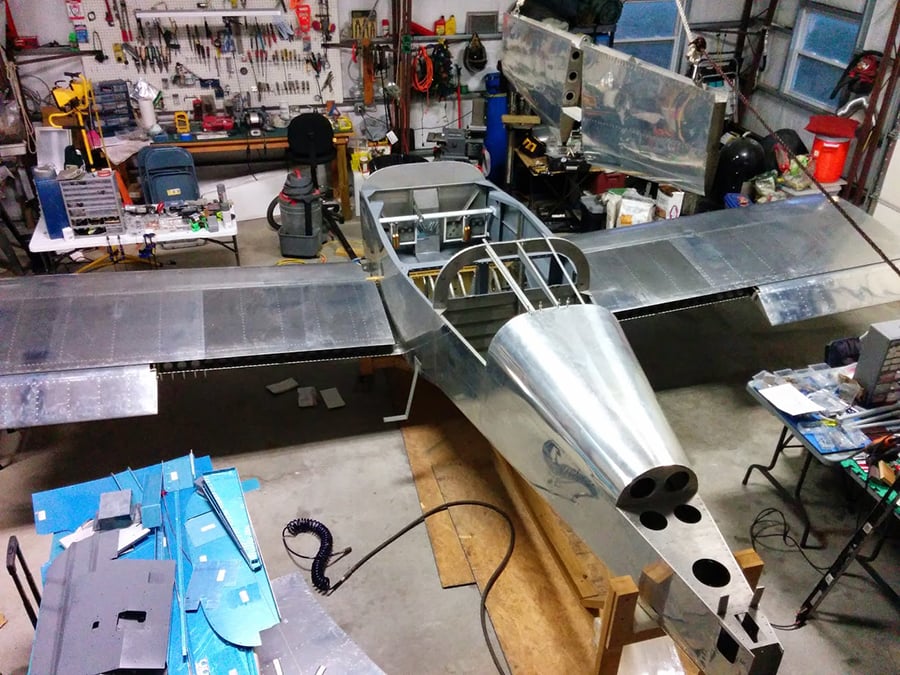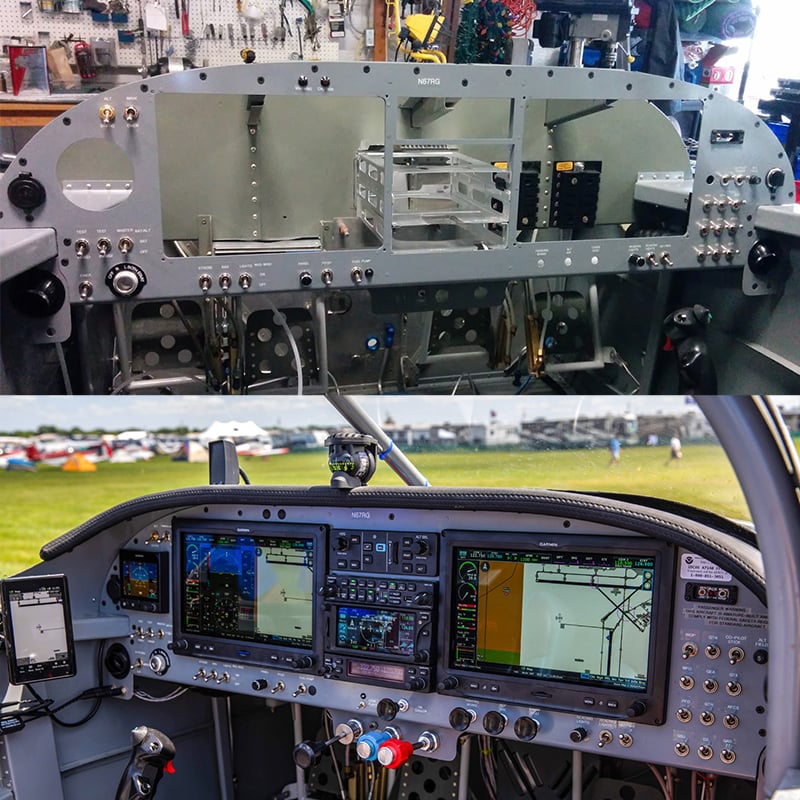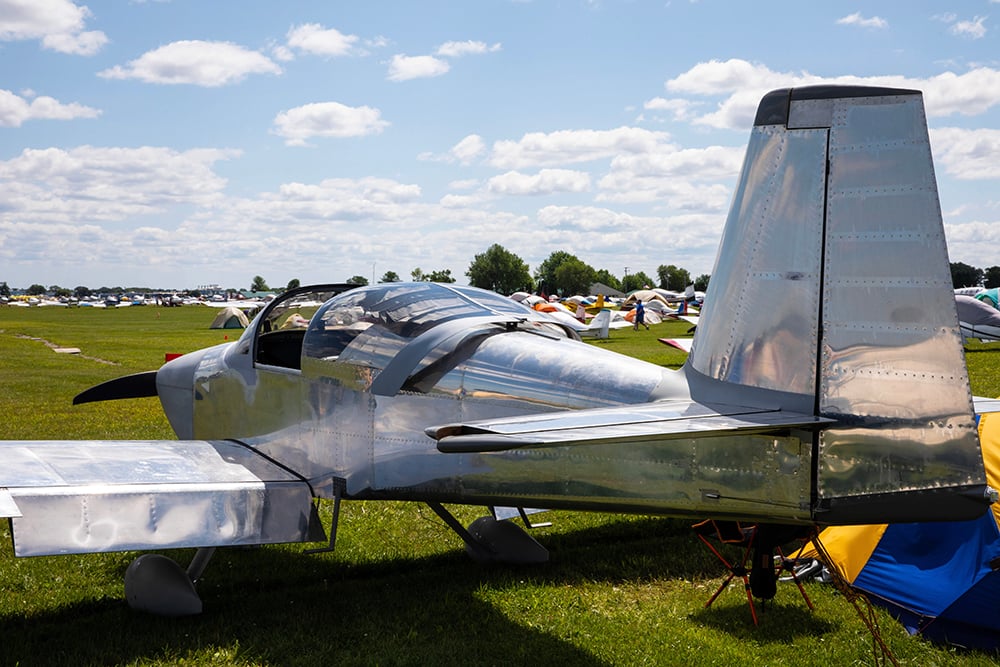TeamX Builder Spotlight: Back in the Pilot’s Seat
Flying plays an interesting role in each of our lives. For some it’s a career and a way of life. For others it’s more of a hobby or pastime. No matter what role it takes, there are occasionally times when it gets pushed to the bottom of the priority list. That was the case for Garmin TeamX engineer Bob Godsy. After earning a private pilot license in high school, flying would take a backseat to raising a family, managing a career and life in general over the next 30 years. But it was his career developing avionics that helped get him back into flying. In fact, he wanted to use the same avionics he helped design in an airplane that would perfectly fit his needs. So after a 30-year flying hiatus, he decided to get back in the pilot’s seat and build the aircraft that would fulfill his needs.
The Experimental Route
Each prospective aircraft owner has a mission. For some getting from point A to point B as fast as possible is priority No. 1. Others may be willing to sacrifice a little speed for the ability to endure rugged backcountry landings. Whatever is most important, owners must evaluate several factors — such as overall performance, cost of ownership and ergonomics, just to name a few — when selecting the ideal aircraft.
Aircraft upkeep is another major consideration. Whereas type-certificated aircraft require A&P certified mechanics to perform maintenance and authorized inspectors to perform annual inspections, experimental-/amateur-built aircraft benefit from more relaxed regulations. In many cases, builders can perform most of these maintenance and inspection tasks themselves.
Experimental-/amateur-built aircraft also offer the flexibility to customize. Avionics, engine and propeller options can be tailored to fulfill those mission requirements … and in an essentially brand-new airframe. Experimental builders also benefit from an intimate understanding of the aircraft they regularly fly. They know it down to the very last rivet.
“For me the mission and cost of owning an experimental airplane far outweighed the cost of buying a type-certificated aircraft. And building an airplane played well into my skills and perseverance,” Bob said.
A few key elements in his aircraft decision: good cruise performance, economical fuel burn and side-by-side seating. Why side-by-side? So he could easily visit with his wife in the cockpit.

Building the Vans Aircraft RV-7A
“At the time, the RV-7A fit my mission best. A lot of Vans aircraft have been built and it’s arguable that based on the number of airframes flying, they are just as safe as type-certificated aircraft,” Bob explained.
With nearly 2,000 RV-7/7A aircraft completed to date, it’s become a stalwart in the experimental aircraft category. And after five years, it was ready to fly.
“I purchased a quick-build project and worked mostly on the weekends. It was very hard to work a full-time job, add aircraft ratings and build an airplane,” he explained. And as with any major project, there were especially difficult challenges. “The fiberglass work was very tedious. But it is a new skill, and I have used it outside of building an airplane,” he added.
To meet his avionics needs, Godsy installed two 10.6-inch G3X Touch flight displays, a GTN 650 GPS/NAV/COMM/MFD, G3X autopilot, G5 electronic flight instrument, GMA 245 audio panel and GTR 200 comm radio.

Avoiding Burnout
No one likes to think about it, but project burnout happens. “For me the end goal kept me going,” Bob said. “Flying regularly and working on additional pilot ratings kept the love flying at the forefront making me want an airplane of my own even more.”
Keeping the project close to home, or even at home, can help too. A long commute to and from the workshop can hinder motivation.
“Having the project in the garage outside my house was paramount to limiting the additional effort required to get work done. Plus, my wife could visit me anytime, so it wasn’t like I was gone and away. I just kept working on it every week and it became a habit I looked forward to,” Bob added.
A Builder’s Advice
So what does it take to build an experimental aircraft? It starts with inspiration, a dash of drive and the motivation to create an airplane tailored specifically for your needs.
“Work on the project every week. Make it a habit. You will enjoy the results when you are finished,” he said.
And if you’re looking for the best place to start or need some guidance along the way, just ask your friends, or check out your local EAA chapter.
“We have a number of people building RVs at Garmin. They are a great resource, equivalent to a good EAA chapter. I discussed issues directly with the TeamX members and they were very helpful, even changed my mind on a number of occasions … in the end you will own an airplane and it is a real “time machine” — it saves you time — and it’s fun.”

The post TeamX Builder Spotlight: Back in the Pilot’s Seat appeared first on Garmin Blog.
Sample Block Quote
Praesent vestibulum congue tellus at fringilla. Curabitur vitae semper sem, eu convallis est. Cras felis nunc commodo loremous convallis vitae interdum non nisl. Maecenas ac est sit amet augue pharetra convallis nec danos.
Sample Paragraph Text
Praesent vestibulum congue tellus at fringilla. Curabitur vitae semper sem, eu convallis est. Cras felis nunc commodo eu convallis vitae interdum non nisl. Maecenas ac est sit amet augue pharetra convallis nec danos dui.
Cras suscipit quam et turpis eleifend vitae malesuada magna congue. Damus id ullamcorper neque. Sed vitae mi a mi pretium aliquet ac sed elitos. Pellentesque nulla eros accumsan quis justo at tincidunt lobortis denimes loremous. Suspendisse vestibulum lectus in lectus volutpat, ut dapibus purus pulvinar. Vestibulum sit amet auctor ipsum.

